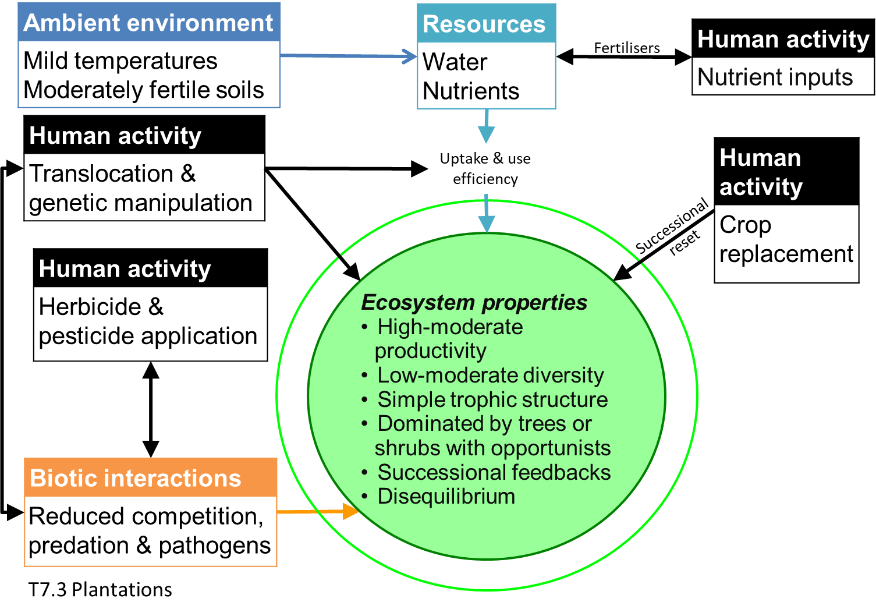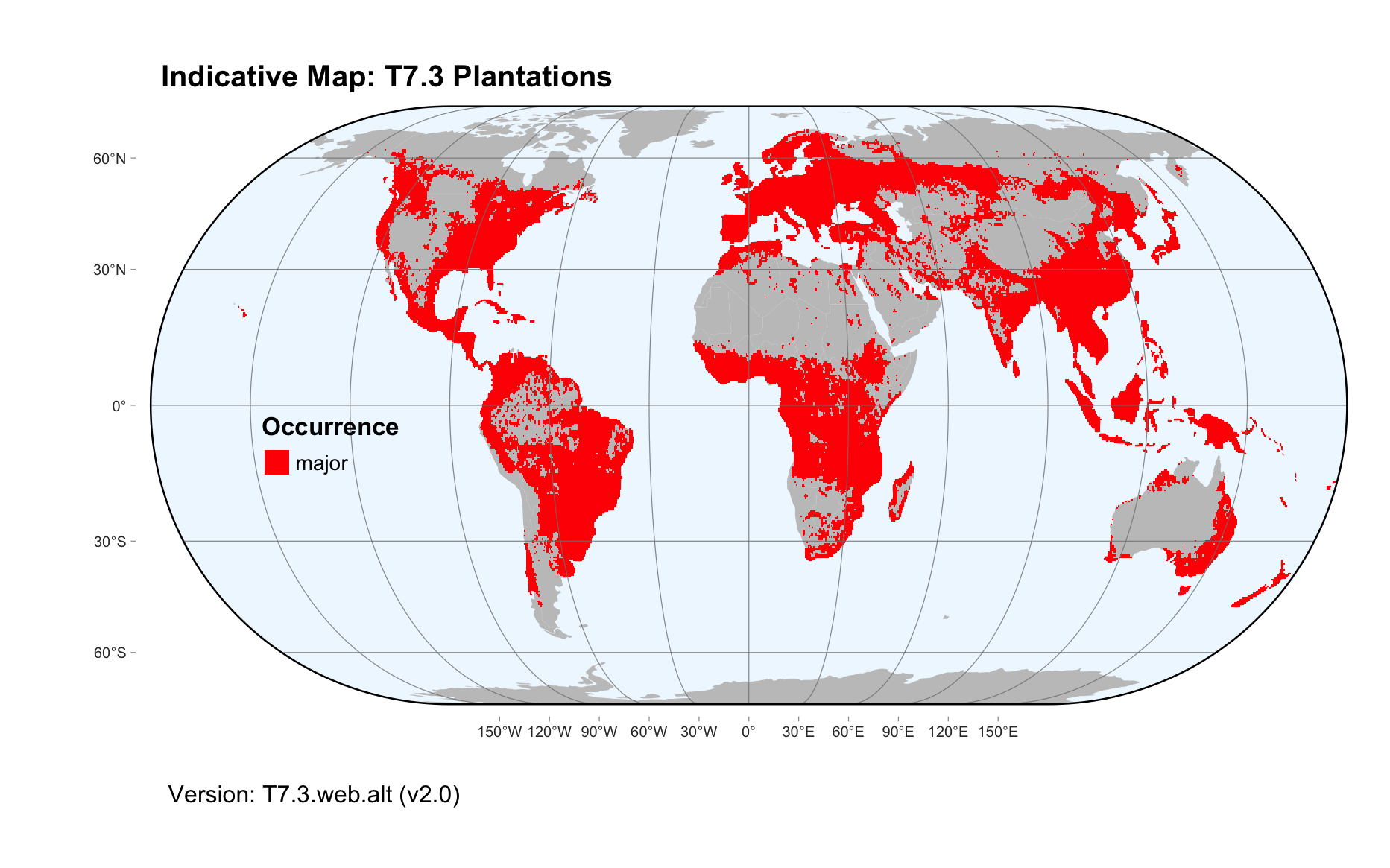Global ecosystem typology
Alternative site for the Global ecosystem typology with additional information for ecosystem profiles and indicative maps.
This site is maintained by jrfep
T7.3 Plantations
Biome: T7. Intensive land-use biome
Contributors:
(texts)
Plantations are generally long-rotation perennial woody crops established and maintained for a variety of food and materials. The harvested products include wood, various fruits, tea, coffee, palm oil and other food additives, materials such as rubber, ornamental materials (cut flowers), etc. The vegetation of most plantations comprises at least two vertical strata (the managed woody species and a ruderal ground layer), although mixed plantings may be more complex and host a relatively diverse flora and fauna if managed to promote habitat features. Fertilisers and water subsidies are applied, and harvesting occurs at intervals depending on the crop.
Key Features
Structurally simple, low-diversity forests of one (rarely, a few) planted tree species of mostly same age, lack of structural elements of old-growth forests such as deadwood or cavities.
Overview of distribution
Abundant in humid or sub-humid, boreal to tropical climates worldwide.
Profile versions
- v1.0 (2020-01-20): DA Keith
- v2.0 (2020-05-31): DA Keith; KR Young
- v2.01 ():
- v2.1 (2022-04-06): DA Keith; KR Young Full profile available at official site
Main references
Selected references for this functional group:
Kanninen M (2010) Plantation forests: global perspectives Ecosystem goods and services from plantation forests (Eds. J Bauhus, PJ van der Meer, M Kanninen), pp1-15. Earthscan, London
Monfreda CN, Ramankutty N, Foley JA (2008) Farming the planet: 2. Geographic distribution of crop areas, yields, physiological types, and net primary production in the year 2000 Global Biogeochemical Cycles 22: GB1022
Diagrammatic assembly model

Maps
Maps are indicative of global distribution patterns are not intended to represent fine-scale patterns. The maps show areas of the world containing major (coloured red) or minor occurrences (coloured yellow) of each ecosystem functional group. See general notes on maps.
There are 2 alternative versions of the indicative map for this functional group, please compare description and sources below.
T7.3.IM.alt_v2.0
Datasets
- Nature-Map-2020
Map references
Martin Jung, Prabhat Raj Dahal, Stuart H. M. Butchart, Paul F. Donald, Xavier De Lamo, Myroslava Lesiv, … Piero Visconti. (2020). A global map of terrestrial habitat types [Data set]. Zenodo. DOI: 10.5281/zenodo.3673586
T7.3.web.alt_v2.0

Datasets
- EarthEnv-LandCover-v1.0
- Nature-Map-2020
Map references
Tuanmu, M.-N. and W. Jetz (2014) A global 1-km consensus land-cover product for biodiversity and ecosystem modeling Global Ecology and Biogeography 23(9):1031–1045 DOI:10.1111/geb.12182
Martin Jung, Prabhat Raj Dahal, Stuart H. M. Butchart, Paul F. Donald, Xavier De Lamo, Myroslava Lesiv, … Piero Visconti. (2020). A global map of terrestrial habitat types [Data set]. Zenodo. DOI: 10.5281/zenodo.3673586
Check: the Glossary / Profile structure / the public document